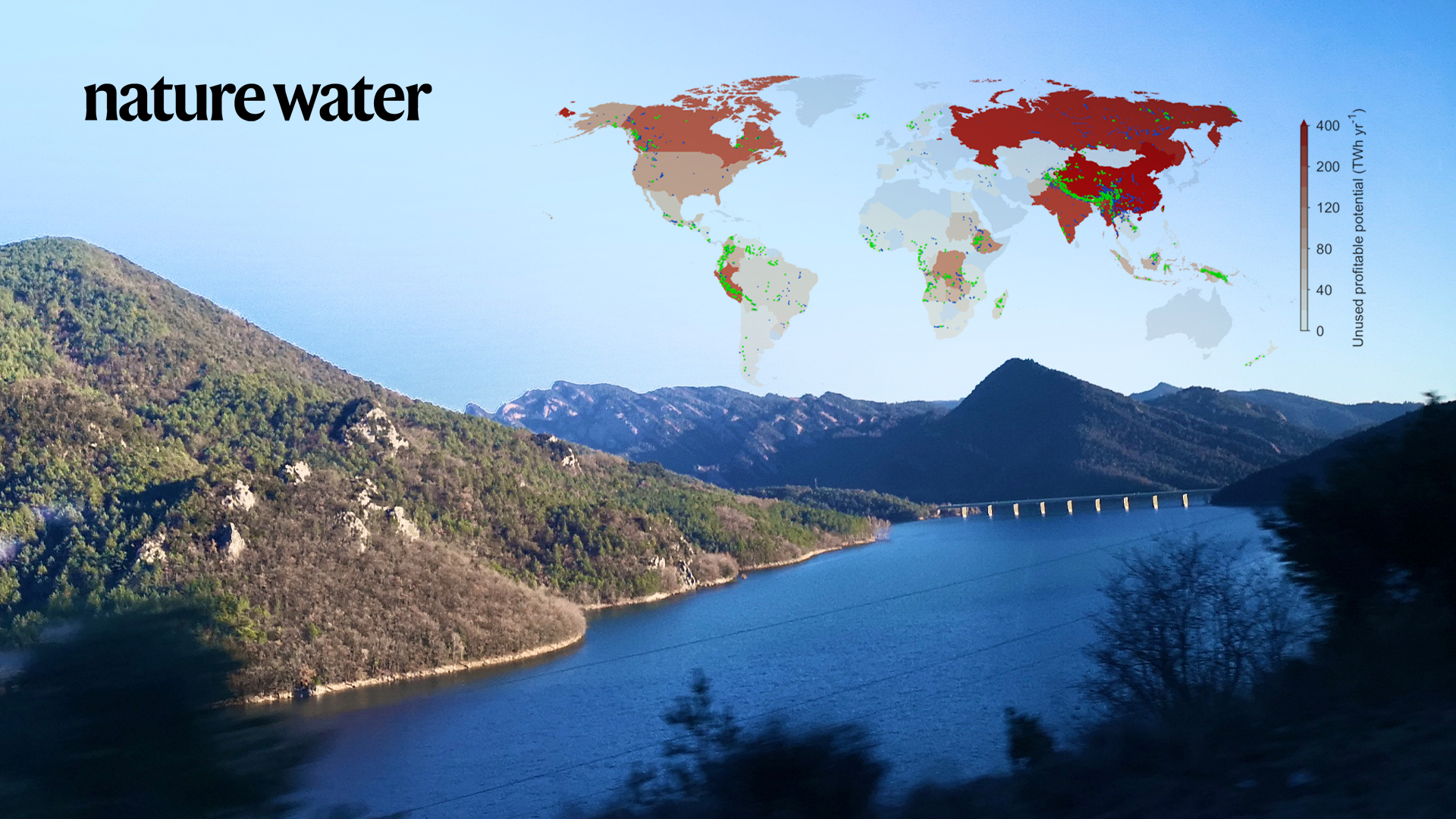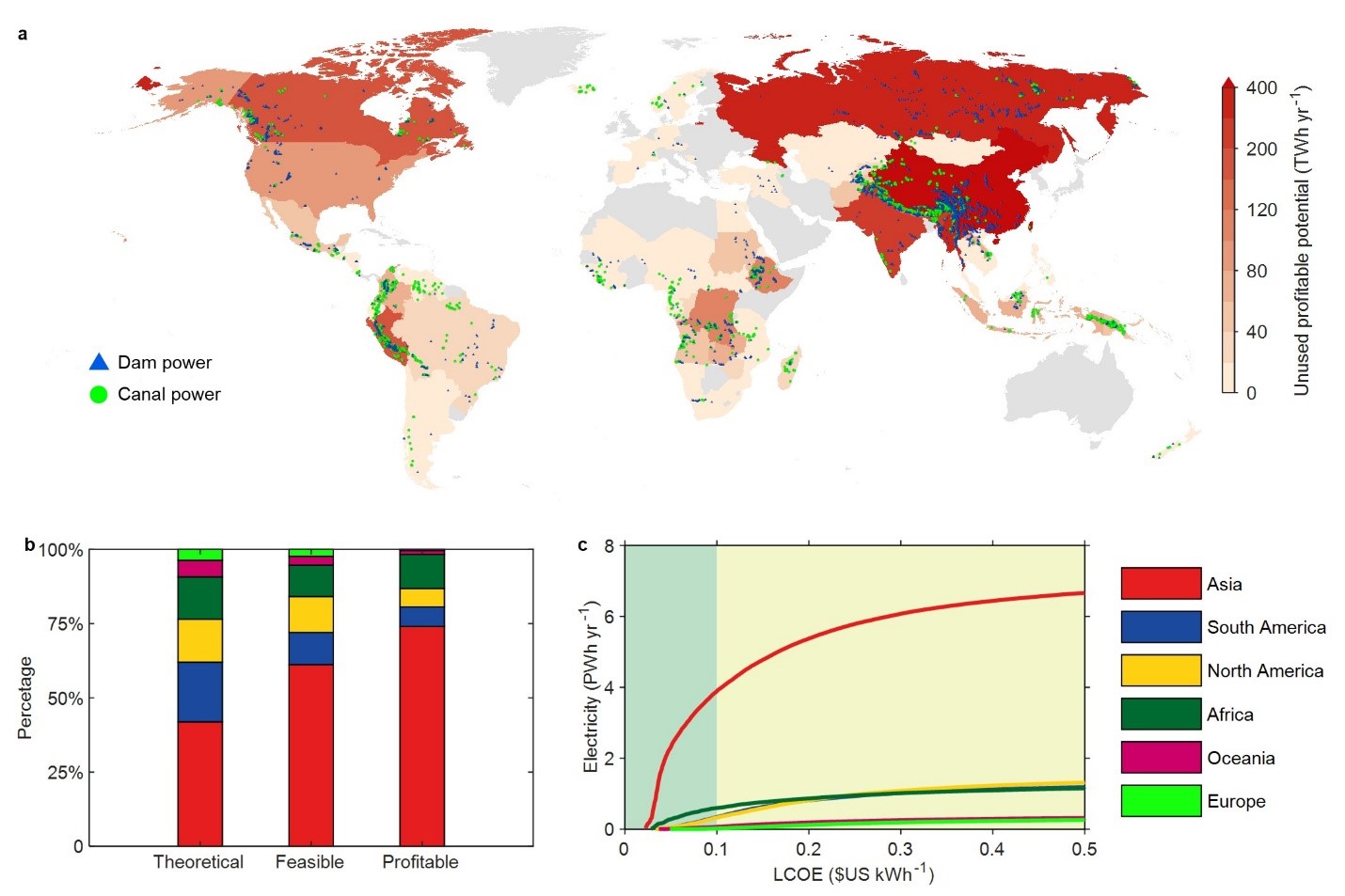Hydropower is a relatively cost-effective energy source, expected to play a key role in the transition of some nations to decarbonized energy systems. However, the development of hydropower is controversial because of its environmental and societal implications. Hydropower plants can disrupt river ecosystems, exacerbate flood risk, degrade land during construction, and displace people. It is still unclear how much hydropower can be developed in the world.

Associate Professor Zhenzhong Zeng’s research team from the School of Environmental Science and Engineering at the Southern University of Science and Technology (SUSTech) has recently analyzed the global unused hydropower potential of 2.89 million rivers worldwide. The authors synthesized river flow data, reservoir data, demographic and environmental variables, and cost considerations to determine locations where new hydropower plants could be established. Their analysis excludes sensitive locations, such as heritage areas, biodiversity hotspots, earthquake-prone zones, and densely populated regions, and considers how hydropower stations can maintain downstream river ecosystem integrity.
Their paper, entitled “A global-scale framework for hydropower development incorporating strict environmental constraints,” was published in Nature Water, a high-impact academic journal covering a broad range of disciplines about natural sciences and high-tech fields.
Prof. Zeng’s team indicated that the global unused profitable hydropower potential is 5.27 petawatt hours per year, and that Asia and Africa account for 85% of this total. They suggest that the most unused hydropower potential exists in Asia, with two-thirds of the global total located in the Himalayas. Africa’s unused hydropower potential ranks second, and the authors propose that most African countries, including the Democratic Republic of Congo, Ethiopia, the Republic of Sudan, South Sudan, Chad, Mauritania, the Republic of Niger, the Republic of Mali, Zambia, the Republic of Mozambique, Zimbabwe, Republic of Namibia, and Angola would be able to meet their current electricity demand if their unused profitable potential was developed.
Rongrong Xu, a Research Assistant Professor at SUSTech, said China has the highest existing hydropower production (~1.23 PWh in 2021); also has the world’s largest unused profitable potential. Potential development sites are concentrated mainly in the mountainous provinces of Tibet, Sichuan, Yunnan, and Guizhou (Fig. 1). This unused profitable potential hydropower of 2.25 PWh yr-1 could meet 30% of China’s current electricity demand of 7.19 PWh yr-1.

Figure 1. Spatial distribution and cost supply curve of unused profitable potential at the global and continental scales. (a) Spatial distribution of unused profitable potential. The profitable potential of each country is calculated based on the hydropower plant location. (b) Proportion of theoretical, feasible, and profitable potential of each continent. Both the feasible and profitable potentials account for environmental constraints. (c) Cost–supply curves of each continent.
Prof. Zeng’s team noted that their analysis offers a path to sustainably develop global hydropower, enabling hydropower to play a larger role in future energy resources while reducing negative impacts on the environment and societies.
Research Asst. Prof. Rongrong Xu is the first author of this paper. Assoc. Prof. Zhenzhong Zeng is the corresponding author. Other members from the SUSTech team included Prof. Chunmiao Zheng, Prof. Junguo Liu, Prof. Bin Ye, Dr. Dashan Wang, Ms. Xinyue He, and Mr. Junyu Zou.
Other researchers that contributed to this work included: Prof. Alan D. Ziegler of Mae Jo University; Prof. Ming Pan and Dr. Yuan Yang of the University of California San Diego; Prof. Lee E. Brown, Prof. Dominick V. Spracklenand and Prof. Joseph Holden of the University of Leeds; Prof. Deliang Chen of the University of Gothenburg; Prof. Haiwei Xu of Zhejiang University; Prof. Sonia Jerez of the University of Murcia; Prof. Peirong Lin of Peking University; Prof. Zongliang Yang of the University of Texas at Austin, Austin; Dr. Dongfeng Li of National University of Singapore; Prof. Junling Huang of China Three Gorges Corporation; Prof. Venkataraman Lakshmi of University of Virginia; Prof. Eric. F. Wood of Princeton University
This study was supported by the National Natural Science Foundation of China (NSFC) and the Start-Up Fund provided by SUSTech.
Paper link: https://www.nature.com/articles/s44221-022-00004-1
To read all stories about SUSTech science, subscribe to the monthly SUSTech Newsletter.
Proofread ByAdrian Cremin, Yingying XIA
Photo By